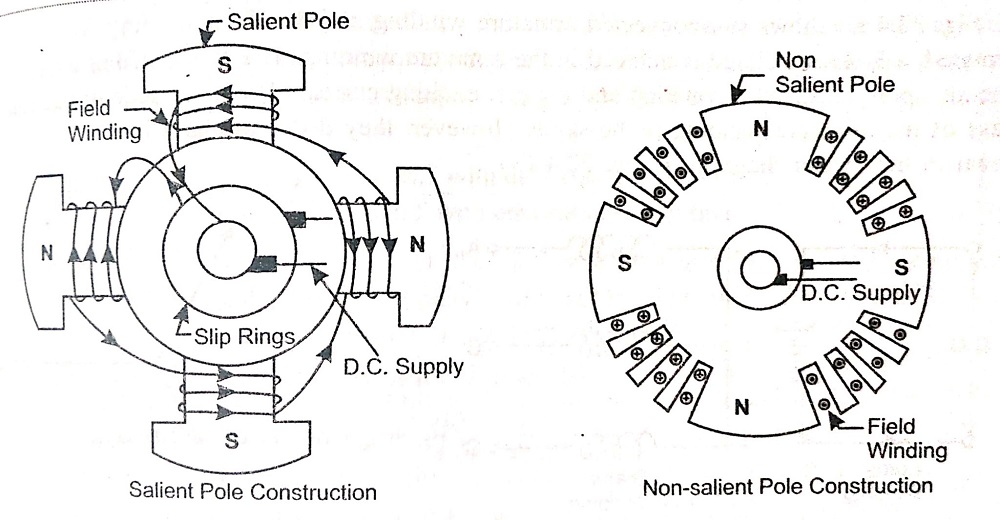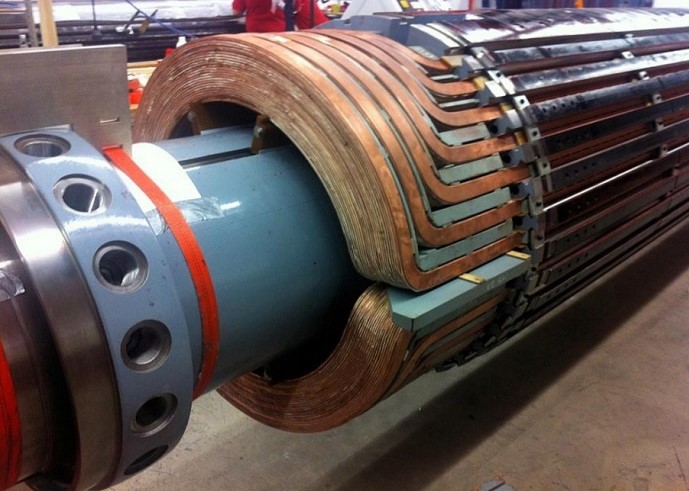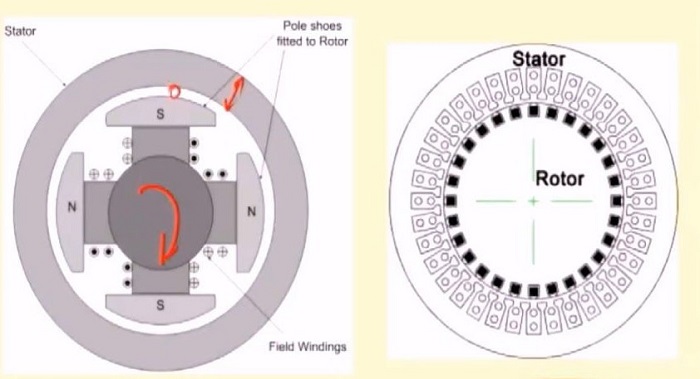The difference between salient pole and cylindrical pole lies in their speed, winding, and other features. Salient pole and cylindrical pole, the two types of the rotor in a synchronous generator also differ in their specific benefits. Follow this article at Linquip and find what the difference between salient pole and cylindrical.
The term “saliency” simply refers to the ability to project outward. Salient Pole machines, by definition, must have poles extending outward, based on the literal sense of the word. Cylindrical Rotor type machines are often limited to 2 and 4-pole turbine generators, whereas salient pole types are manufactured with 4 poles upwards and cover the majority of job classes. Several Suppliers and Companies, as well as various manufacturers and distributors, have introduced the salient pole and cylindrical pole rotors, and there are many Rotors for Sale on Linquip.
There is a complete list of salient pole and cylindrical pole rotor services on the Linquip website that covers all OEM fleets. Linquip vendors can assist you with this. Please contact Rotor Experts in Linquip to learn more about how to connect with a diverse group of service providers who consistently deliver high-quality products.
What are Salient Pole rotors?
Salient pole rotors are large in diameter and shorter in length. They are typically used in lower speed electrical machines (100 RPM to 1500 RPM). Salient pole rotors normally require damper windings to avoid oscillations of rotors during operation. They are mostly used in hydropower plants.
What is Cylindrical (non-salient) pole?
A simple brief definition and explanation. The main story is on the way: salient pole vs cylindrical pole. Cylindrical (non-salient) pole or round-rotor or a drum rotor usually can be found in higher speed higher power applications, such as turbogenerators. A solid rotor is distributed over the edge of the rotor in the rotor with cylindrical poles. However, each slot has different turns, so that sinusoidal flux is created when excited. Though projections from a solid cylinder rotor with the winding are located in the salient pole. Cylindrical pole spins at 3600 or 1800 with 2 or 4 poles.
What is the Difference between salient pole & cylindrical pole (non-salient)?
As mechanical energy is converted into electrical energy, a synchronous generator has a stator and a rotor. The stator consists of stationary windings of the armature and the rotor consists of the winding of the ground. There are two types of rotor:
- Salient Pole type
- Cylindrical pole
So, the question now is: what is the difference between salient pole and cylindrical pole? First, as it is said before, cylindrical pole (non-salient) machinery tends to rotate rapidly, but salient pole machines break down due to mechanical stress. Another difference between salient pole and cylindrical pole is that salient pole is more stable than the cylindrical pole (non-salient). But why? Saliency promotes reticence that enhances stability. Due to the size and lower speed of the rotor, they are more stable due to large inherent inertia.
The third difference between salient pole and cylindrical pole is that the cylindrical pole (non-salient) design is much more durable and has a much lower winding loss than a salient pole unit. Next, its diameter is smaller but the axial length is longer. Also, both winding and noise are less than salient polar rotors. In cylindrical pole rotors, damper windings are not required. Flux is sinusoidal and thus makes the waveform better. non-salient pole rotors are used in nuclear, gas, and thermal power plants.
The last difference between salient pole and cylindrical pole is that the rotor of the cylindrical pole can run at a higher rotational speed, provided that the rotor is easily balanceable and the centrifugal force can be equally distributed.
What Is the Advantage of a Salient Poles in An Alternator?
Salient-pole configuration has the following advantages: It allows for greater ventilation. The pole faces are formed in such a way that the radial air gap length rises from the pole center to the pole tips, resulting in a sinusoidal flux distribution in the air gap, allowing the machine to create sinusoidal emf.
Why Is Salient Pole Rotor Laminated?
To reduce electric current loss, a salient pole rotor is composed of steel laminations. Because the rotor is sensitive to magnetic field variations, this is the case. Stacking laminations are used to join poles of the same dimensions together to get the desired length.
By reading this article, you learned about the distinguishing features of salient poles and cylindrical poles. However, there might be some questions left in your mind. So, please sign up and leave your questions in the comments. We are for sure to answer all the items regarding the difference between salient pole and cylindrical pole at Linquip.
Download difference between salient pole and cylindrical pole PDF
Buy Equipment or Ask for a Service
By using Linquip RFQ Service, you can expect to receive quotations from various suppliers across multiple industries and regions.
Click Here to Request a Quotation From Suppliers and Service Providers
Read More on Linquip
- Types of Circuit Breaker: A Basic Guide to Know Different Classifications
- Types of Heat Exchangers: An Introduction to All Essential about Specifications
- Types of Plate Heat Exchanger: Different Types with Wide Use
- Salient Pole Rotor: learn the features simply with the non-one too
- Types of rotors in Centrifuge & Helicopter ( Review in 2020)
- The Difference Between Stator and Rotor: The Ultimate Guide!
- centrifuge rotor types: an insight to the types, uses and the history
- An ultimate guide to fixed angle rotors and their function





